Kia Sorento PHEV: Lots of space and high consumption
Until the market launch of the all-electric EV9, Kia’s flagship SUV is still the Sorento, and the plug-in hybrid is this model’s top motor. Although the hybrid offers ample space, our driving report shows that this space also has drawbacks.
We weren’t actually planning to test drive a plug-in hybrid with mostly known technology since the Kia Sorento PHEV resembles Kia’s Niro and Sportage plug-in hybrids. Instead, we were waiting for the Kia Niro EV. Unfortunately, the car we were supposed to test was involved in an accident shortly before our scheduled run. Kia, therefore, sent the big Sorento as a plug-in hybrid at short notice. We’ll be back in a few weeks to test the Niro EV in everyday use.
***
Like the Sportage plug-in, the Sorento PHEV is based on Kia’s N3 platform. The drive is therefore the same, but the body is significantly larger. At 4.81 metres, the Sorento is 31 centimetres taller than the Sportage, 3.5 centimetres wider and five centimetres taller.
On paper, the supposedly small differences in width and height don’t adequately indicate just how much larger the Sorento actually is. While the Sportage has a few curves that add a few extra centimetres here and there, the Sorento is relatively angular and evokes American-style cars. The high front stands steeply in the wind, and the roof extends without any significant slope to just before the rear, only to end in a steep rear section. Although this maximises the space in the seven-seater interior, it is at the expense of aerodynamics at both the front and the rear.
The Sorento could actually be seen as an off-road vehicle rather than an SUV, with 18 centimetres of ground clearance, all-wheel drive and elaborate off-road driving modes. If you don’t have to move a horse trailer across muddy meadows on a regular basis, you will probably use the off-road driving in the Sorento just as often as in the Sportage – almost never. And if you do happen to want to move a horse trailer across muddy meadows, you need to make sure it is a small one – the towing capacity is limited to 1.5 tonnes, whereas the Sorento with diesel can tow 2.5 tonnes.
Space, space and more space
The reasons for choosing the Sorento are probably space, space and more space. The first additional space is at the front: the driver and front passenger sit very similarly to the Sportage in terms of ergonomics (felt, not measured). The significantly higher bodywork means that even at 1.85 metres, the head area is decidedly airy. If we were talking about a sports car, you might mention at this point that there’s plenty of headroom, even with a racing helmet. In the Sorento, it would probably be more the cowboy hat to stick with the horse trailer example.
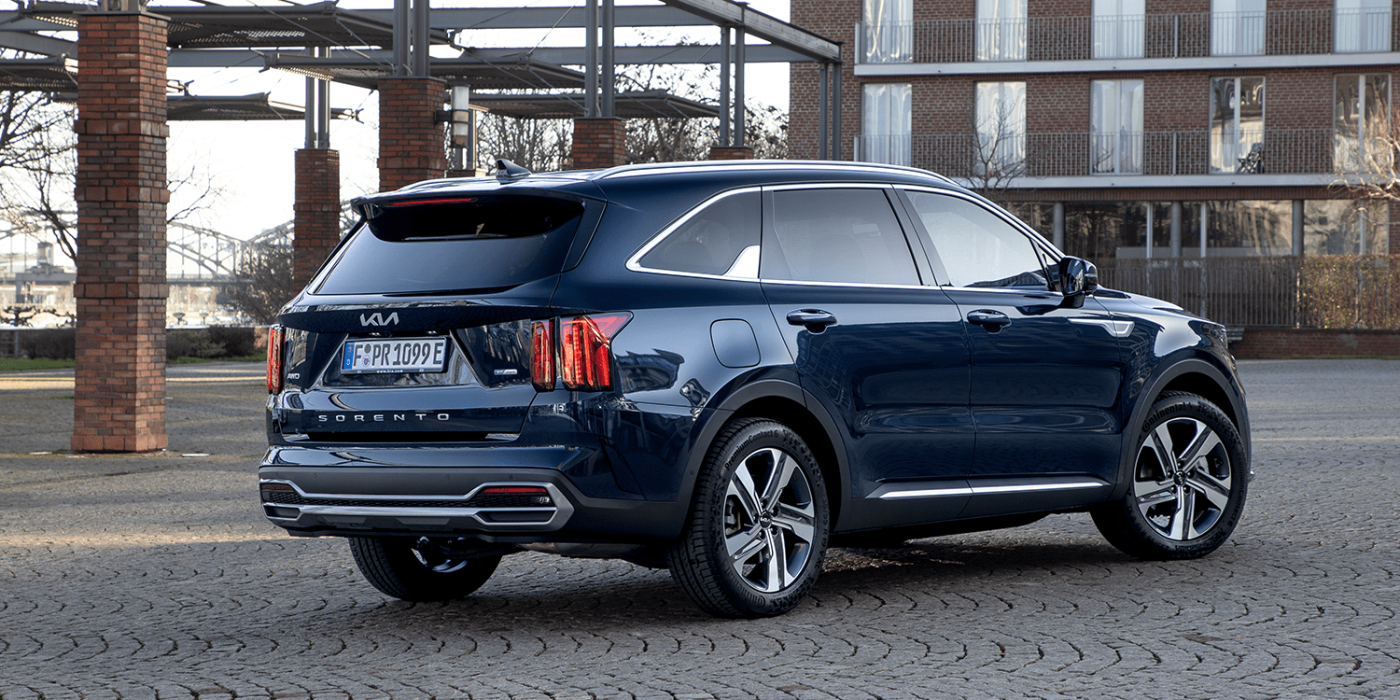
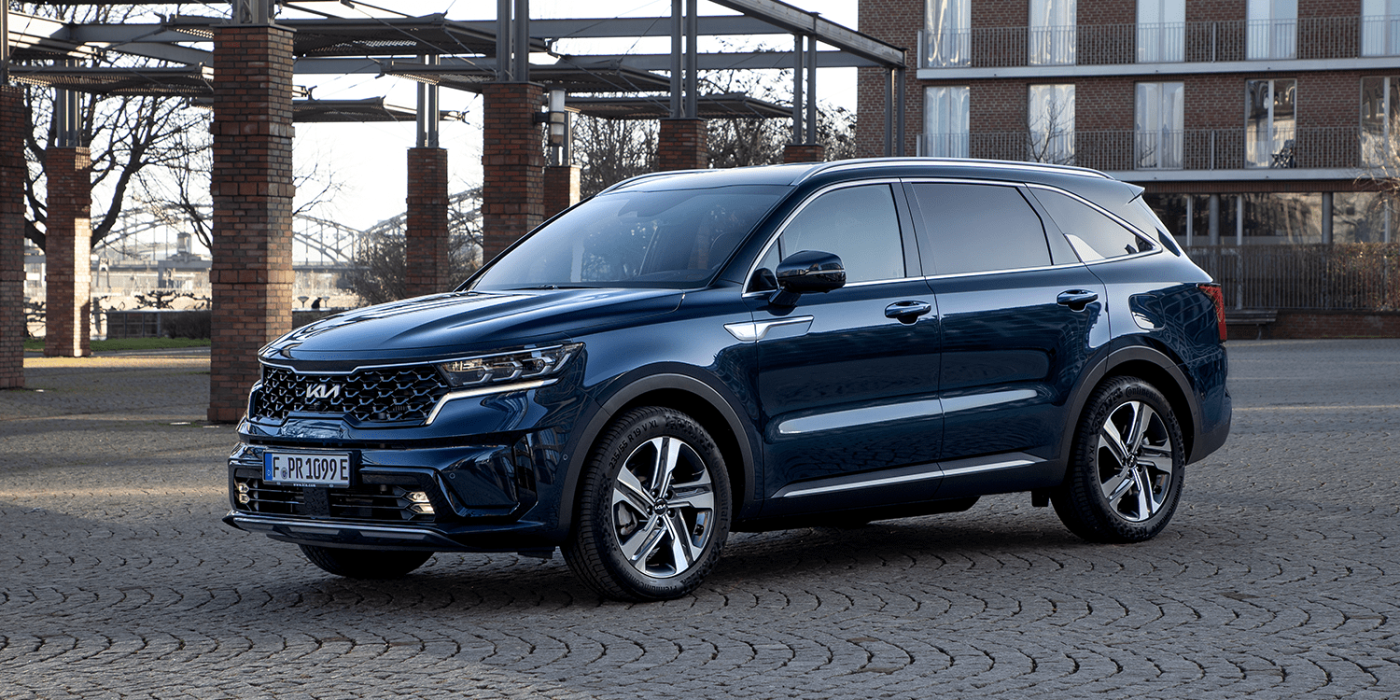
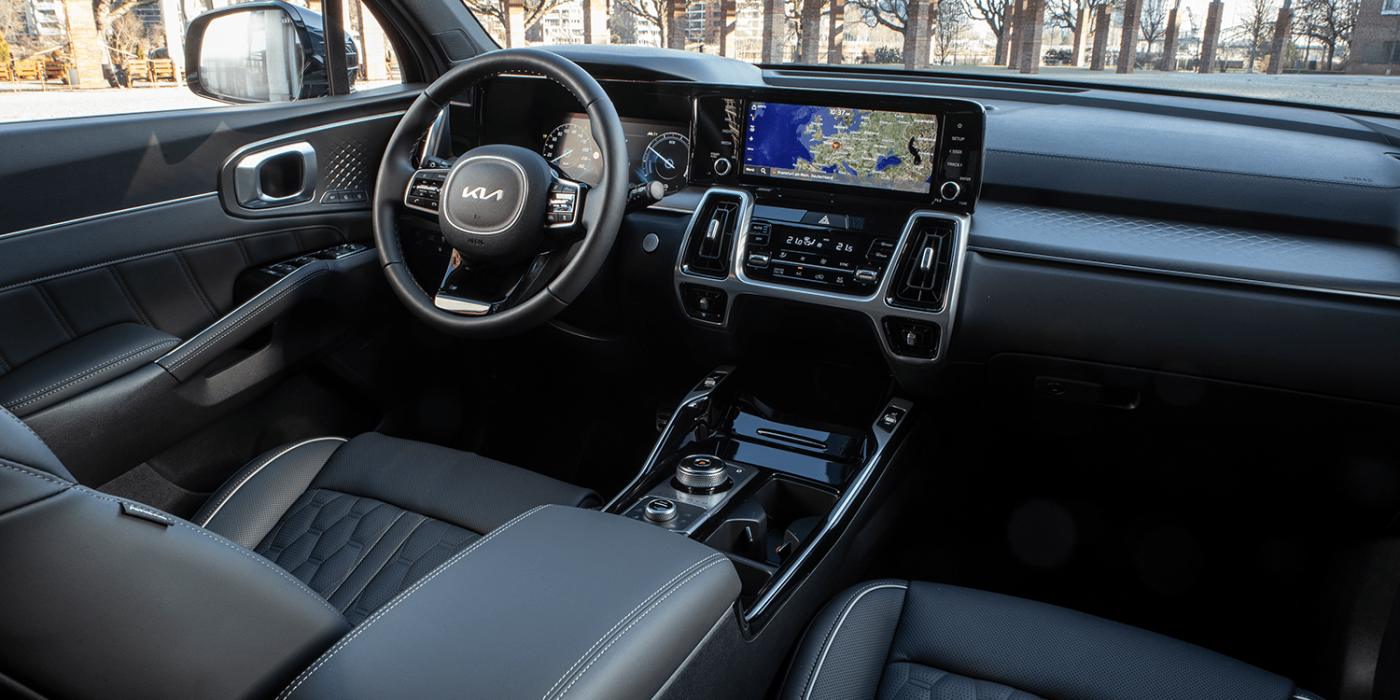
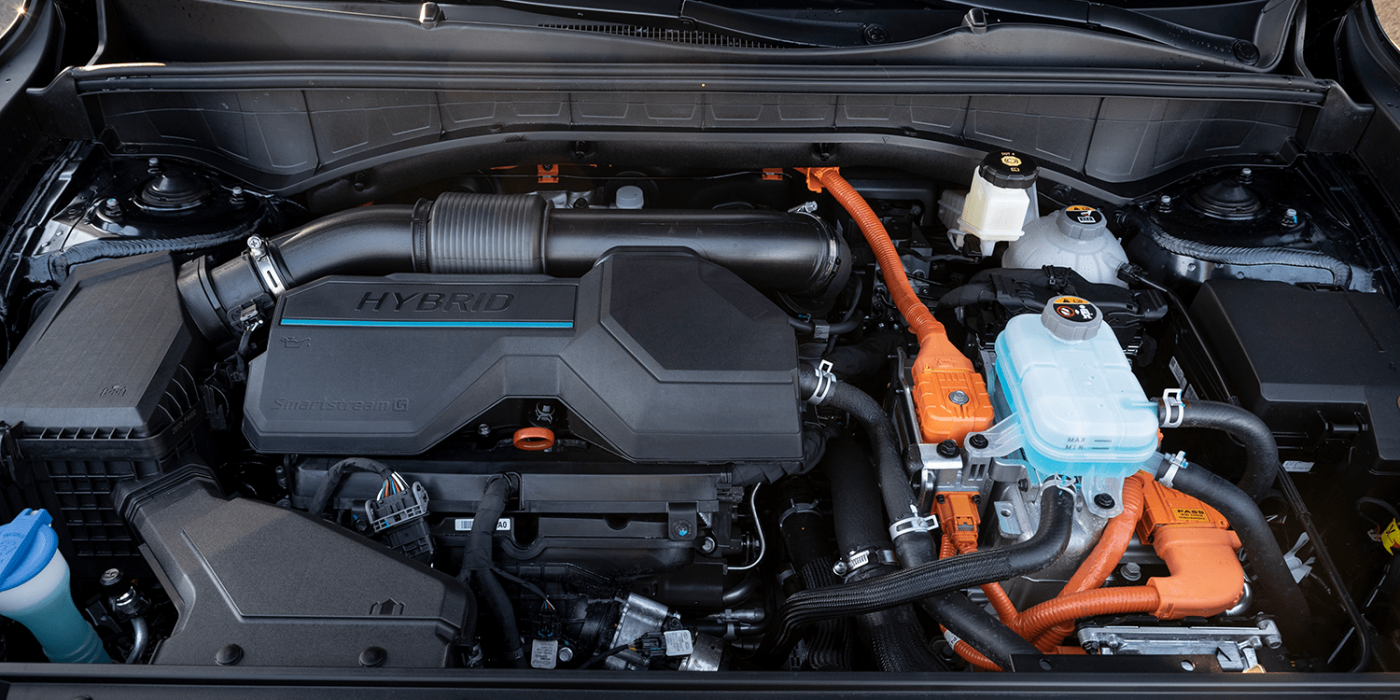
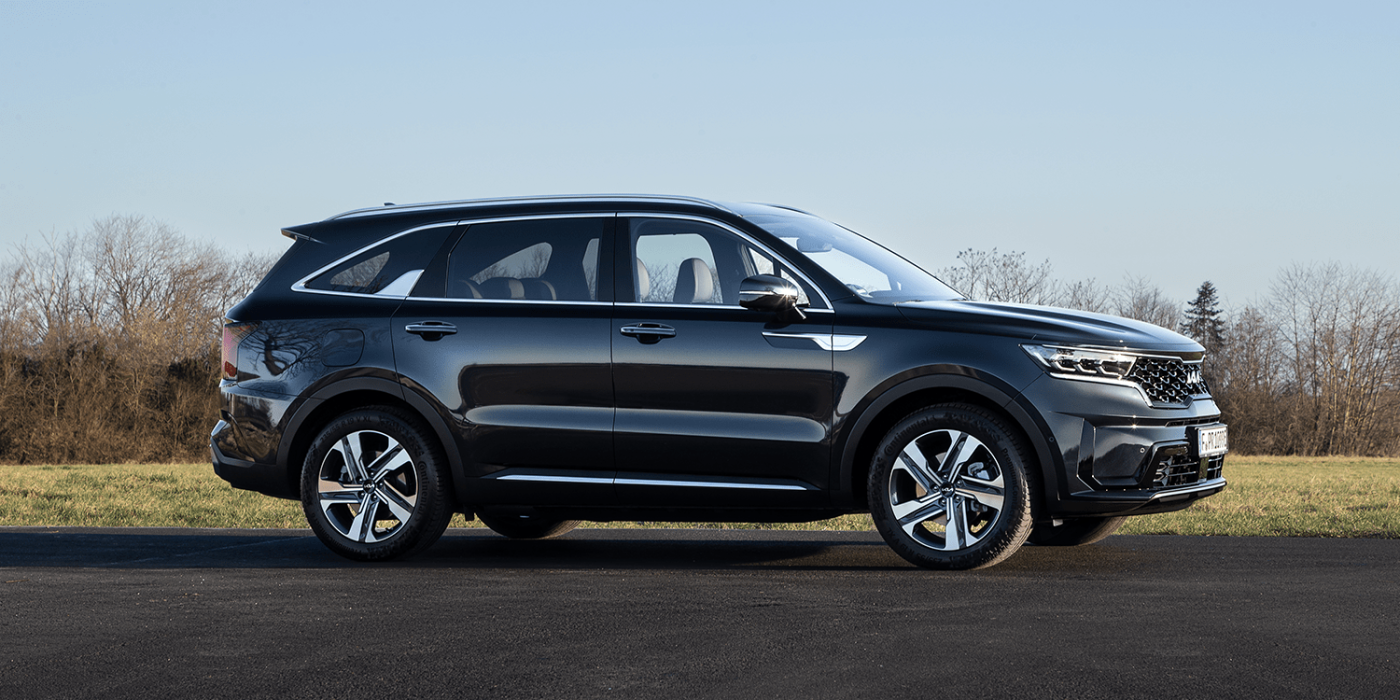
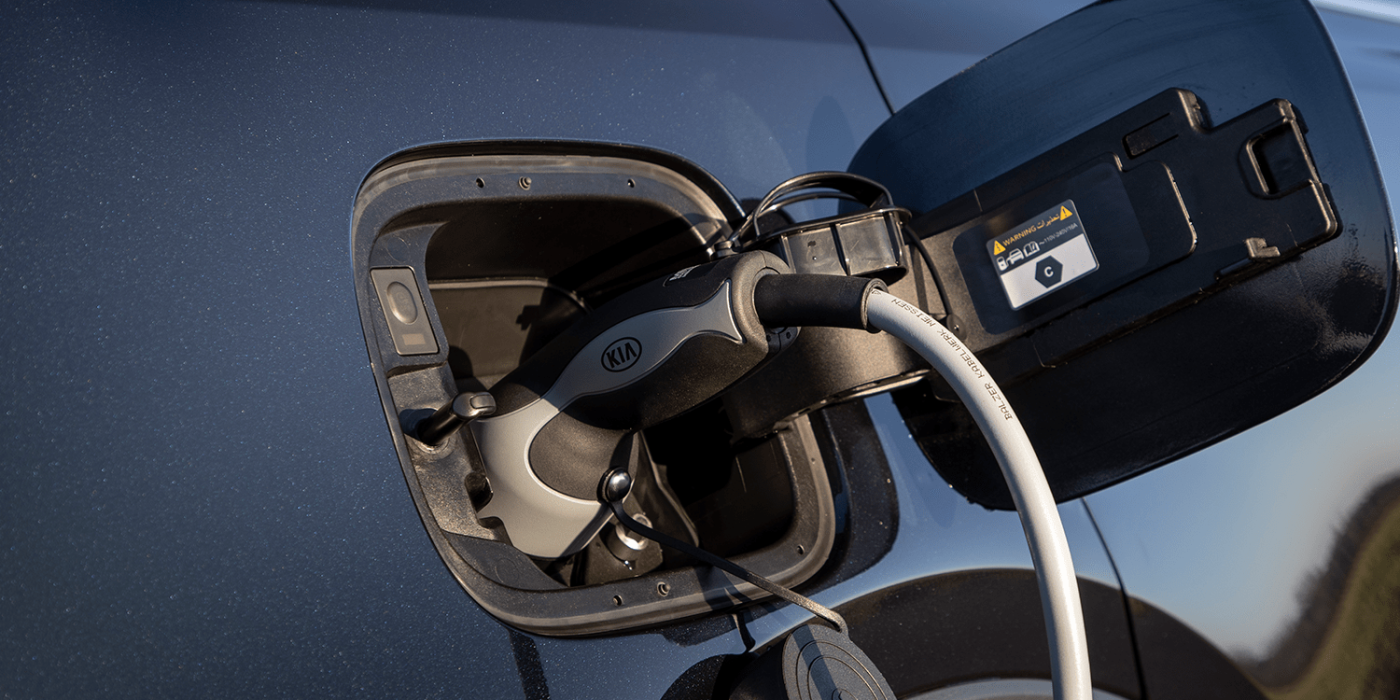
Another place with ample room is the back seat, much the same as the front in terms of height, but also plenty of legroom compared to the Sportage. Not all of the 31 extra centimetres have ended up around the back seat, but some. That really is a class difference. Even when the sliding rear seat is moved to the most forward position, there is still enough room (depending on how the front seats are adjusted) for adults to travel comfortably in the Sorento over longer distances.
And last but not least, of course, is the boot. Here, too, the class difference is noticeable. With five seats in use, the boot volume is around 700 litres. This is a few litres more or less, depending on whether the Sorento was ordered as a seven-seater and the small compartment under the boot has fallen victim to the folded rear seat backrests.
Our test car was such a seven-seater, then the load compartment could even shrink to 187 litres if seats six and seven are actually used. If the seat backs in both rows are folded down, just over 2,000 litres fit in the Sorento. The load area rises slightly and is not completely flat, but due to the enormous interior height, this space is still usable for most applications.
To cut a long story short: spaciousness is the big argument in favour of the Sorento. Most buyers are likely to choose the body of the Sorento because of their roominess requirements and then choose the matching powertrain. It is probably less likely that a driver would choose a Sorento PHEV if they were primarily looking for a plug-in drive from Hyundai-Kia.
High consumption lowers the range – even in petrol mode
As unbeatable as the spaciousness and feeling of room inside are, at two tonnes, the Sorento PHEV is neither particularly light nor very streamlined. A Tesla Model Y Long Range weighs the same, is only six centimetres shorter, but glides through the wind with significantly less resistance.
This has several effects when driving. The most obvious, of course, are consumption and range. At 28 kWh/100km, the power consumption was only about two-kilowatt hours higher than our test value for the smaller Sportage (German exclusive), which is almost okay considering the dimensions. But we did not come close to the 16.1 kWh/100km rated as WLTP value. If, on the other hand, we take the similarly sized Model Y just mentioned as a comparison, the Sorento, as a plug-in hybrid, allows itself significantly more power than the incomparably more powerful battery electric car.
In terms of range, this means that a fully charged battery in the Sorento with its 13.8 kWh would be empty after 49 kilometres. However, the Kia always retains a certain buffer in the battery so that it no longer drives purely electrically when the charge level is less than around 15 per cent – or only for very short sections when manoeuvring slowly. A large part of owning the Sorento’s plug-in hybrid means having reliable access to a charging station because it is likely to need charging for every day it is used.
The issue of range is not just about the battery. The petrol tank can hold just 47 litres. In our test, the overall range enabled by the combination of electric motor and combustion engine came to just over 400 kilometres. Fuel consumption in our test usually went into double figures irrespective of whether on short trips in single-digit plus temperatures or on motorway sections.
If you run the battery down and don’t fill it up to the reserve, more than 350 kilometres on the motorway are probably out of the question – and you can only fill up the tank quickly in the Sorento, the battery is only charged with alternating current. We are already looking forward to the practical tests with the EV9, which should compare well with the Sorento in terms of bodywork (and its primary focus on the US market).
The petrol engine dampens the driving pleasure
The Sorento PHEV weight and aerodynamics also mean that the 1.6-litre petrol engine with its 132 kW often reaches its limits when the battery is empty, and the 67 kW of the electric motor are thus omitted. At higher revs, it gets quite loud, and you can feel the small four-cylinder struggling in the big car. This is not fun in the long run, it very rarely feels like 195 kW system power in the Sorento. The Sorento is particularly pleasant to drive at lower speeds in E-mode, even if 67 kW does not sound like much. The glaring problem here is that, in the spirit of sustainable transport – or the Verkehrswende, meaning transport transition, as we say in Germany – 4.81-metre-long seven-seater SUVs are not a practical size to drive through inner cities, especially in Europe, even if it is the speed comfort zone of this specific vehicle.
Whether the Sorento Plug-in Hybrid is the right car depends on how you look at it. The BEV world cannot yet offer this much space and the option of seven seats in this price range. The long versions of the available high-roof station wagons usually lack range, and their aerodynamics and efficiency also need improvement, so they are no real substitute. Critics, on the other hand, see a big car with a small battery and a thirsty petrol engine. Plenty of space or not.
Conclusion
Prospective buyers of a PHEV SUV will not end up with the Kia Sorento by chance but very consciously because of its size. The price makes sure that you don’t just buy the extra 31 centimetres without really wanting it, even if the Sportage with its 4.52 metres would actually be enough. The recommended retail price for the plug-in hybrid was 61,390 euros in Germany, a whopping 16,100 euros more than the Sportage. Our test car as a seven-seater even cost just under 64,000 euros. In the end, due to “lack of availability”, orders for the Kia Sorento Plug-in Hybrid have been stopped. Kia could not confirm when exactly the model will be available again.
Reporting by Sebastian Schaal, Germany.

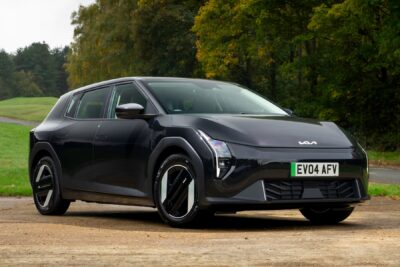


3 Comments